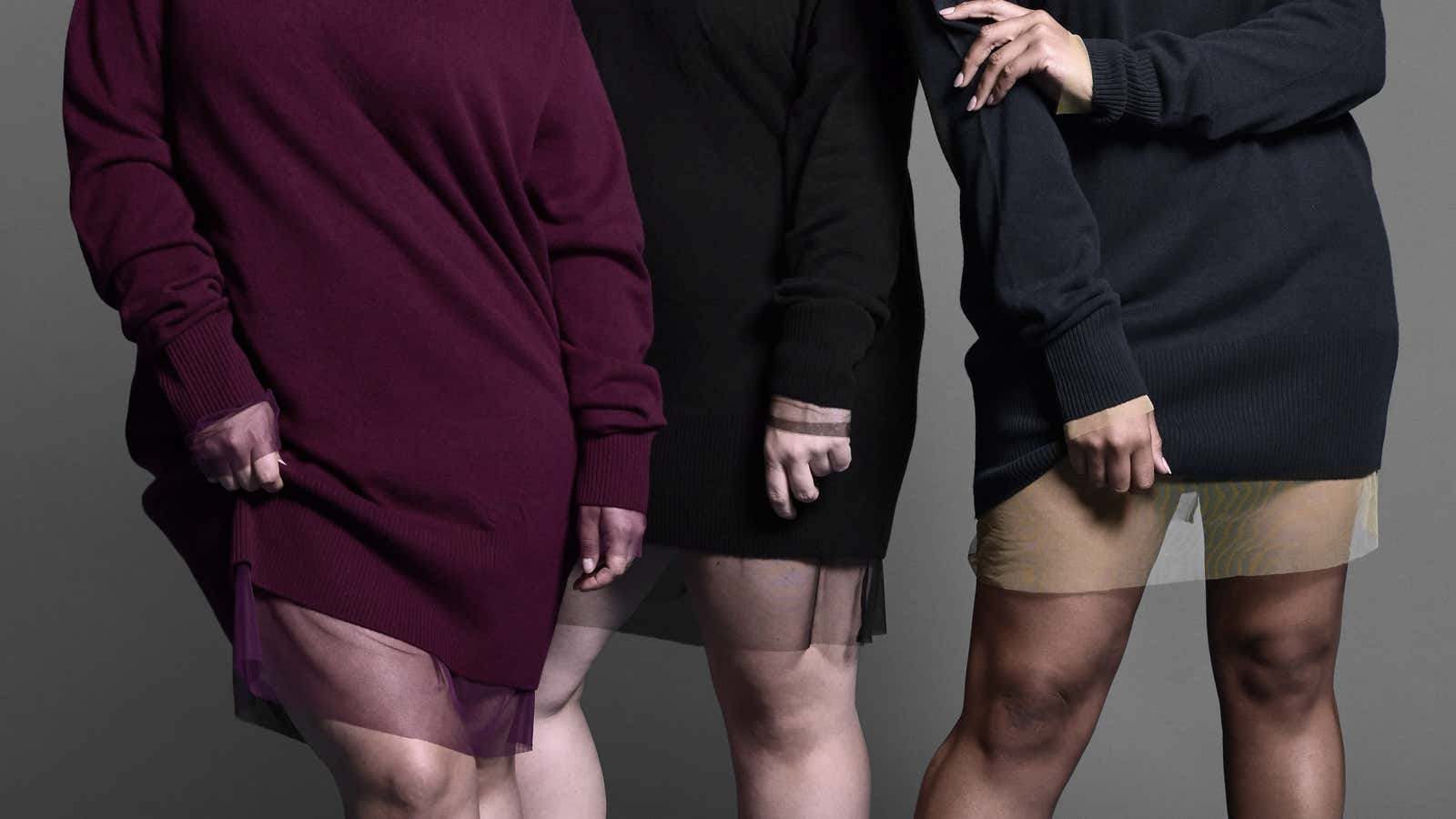Two-and-a-half years ago, Polina Veksler and Alexandra Waldman founded Universal Standard, a fashion-forward, plus-size women’s clothing brand as an antidote to the predominant plus-size-apparel experience: sold far away from the rest of women’s apparel, relegated to the areas like the furniture floor of the department store and mostly made with cheap, flammable, polyester fabrics.
Early on while conducting market research in their showrooms in New York City and Seattle, Veksler and Waldman noticed their plus-size shoppers—technically anyone in a women’s size 10 and above—were reluctant to invest in expensive clothing because the women believed they would go down a size eventually. Currently, the majority of stylish plus-size fashion can be found in fast fashion brands like Forever 21, Old Navy, and ASOS; anyone above a size 10 who wants to wear Prada, or even J.Crew, is out of luck.
The body-positivity movement has made strides in de-stigmatizing plus-sized bodies, called “fat acceptance.” One of the results of the movement, much of which emerged online, has been the celebration of plus-size fashion, first through popular DIY tutorials (before on-trend styles were available in retail) and then through plus-size fashion bloggers who, due to the advent of fast fashion brands launching plus-size lines, became influencers similar to their “straight size” counterparts.
That said, weight fluctuates, and finding out that your favorite of jeans don’t fit anymore is a frustrating experience. Veksler and Waldman dignified this practical reality without adding a value judgement: If you buy something from Universal Standard, then go down or up a size in the year following, the company will exchange your clothing for new ones that fit—no questions asked. The gently-used garments are donated to charities like Dress for Success, which need professional attire in plus sizes.
This revolutionary exchange policy—called “Universal Fit Liberty”—would benefit women of all sizes, of course. That’s likely why the company just received $7 million in Series A funding from Imaginary Ventures (led by Natalie Massenet, founder of luxury e-commerce leader Net-a-Porter), Red Sea Ventures, Gwyneth Paltrow, and the founders of several other high-profile lifestyle brands, including Toms, SoulCycle, Sweetgreen, and MatchesFashion.
That said, Universal Standard is a game-changer in the plus-size market, which to date has assumed plus-size women do not want to look stylish; that they’re just searching for clothing to temporarily cover up their bodies while they lose weight. Universal Standard’s designs are minimalist, preppy, and corporate office-appropriate, like J. Crew meets Everlane, which price points to match.
Universal Standard currently sells clothing in sizes 10 to 28, but plans to expand in both directions, to size six and size 32. Everlane, which markets itself on its “radical transparency,” has been criticized for its reluctance to sell clothes in plus sizes. In a 2017 email to Amanda Mull, writing for Racked, the company said it needed “to take the time to do it right” by innovating “new fits, new models and new fabrics.” Meanwhile, Everlane—which made an estimated $100 million in revenue in 2016—expanded from an online-only retailer to building a brick-and-mortar flagship in New York City (something it promised not to do a few years ago), and launched denim and kids collections.
Veksler and Waldman are sympathetic to Everlane. “Because they’re going from small to large clothes,” Veksler says, costs increase. Raw materials can be expensive, and it can be a challenge to work with the different technical fabrics and new patterns required for plus-size clothing. To maintain its margins, Everlane would have to raise all of its prices or set different prices for plus-size and “straight-size” (non-plus-size) clothing.
Designing and manufacturing straight-size clothing is much easier than it is for plus-size clothing—not because straight-size women are easier to dress, but because the fashion industry has many more resources in place for straight size. When Veksler and Waldman, began, they had to essentially start from scratch in training their manufacturing facilities in Peru, China, and the US—none of which were familiar with plus-size clothing.
“We want to give women the freedom to be in their bodies,” Veksler says. “Instead of buying for what they hope their bodies look like, [they can buy] to see their reflections in the present.” And if their bodies do change, there’s an exchange policy for that.
